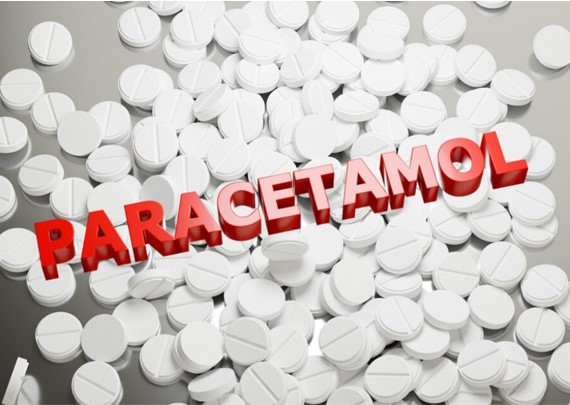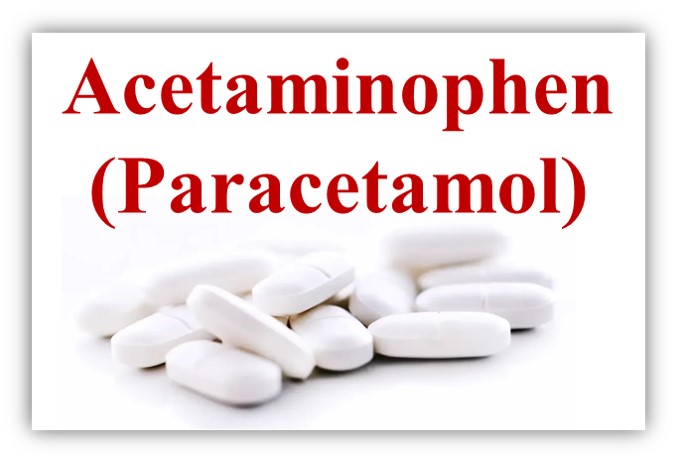OVERVIEW
Paracetamol aka acetaminophen, to relieve pain and reduce fever. It is considered a safer alternative to nonsteroidal anti-inflammatory drugs (NSAIDs) and is available over the counter in a variety of formulations, including tablets, capsules, liquid suspensions, and suppositories.

DOSAGE
Adults
Standard Dose: 500 mg to 1000 mg every 4-6 hours as needed.
Maximum Daily Dose: Do not exceed 3000 mg to 4000 mg in 24 hours, depending on guidelines and individual health considerations.
Children
Standard Dose: 10-15 mg per kg of body weight, given every 4-6 hours as needed.
Maximum Daily Dose: Do not exceed 60 mg per kg in 24 hours.
Formulation: Available as liquid suspension, chewable tablet, or suppository. The dose should be calculated based on the child’s weight.
| Paracetamol Dosage | ||
| Age | Dose | Frequency |
| Tablet | ||
| Over 16 years | Up to 1000 mg | Max 4 times in 24 hours |
| 12 to 15 years | Up to 750 mg | Max 4 times in 24 hours |
| 10 to 11 years | 500 mg | Max 4 times in 24 hours |
| 8 to 9 years | 375 mg | Max 4 times in 24 hours |
| 6 to 7 years | 250 mg | Max 4 times in 24 hours |
| Six Plus Syrup | ||
| 10 to 11 years | 10 mL (500 mg) | Max 4 times in 24 hours |
| 8 to 9 years | 7.5 mL (375 mg) | Max 4 times in 24 hours |
| 6 to 7 years | 5 mL (250 mg) | Max 4 times in 24 hours |
| Infant Syrup | ||
| 4 to 5 years | 10 mL (240 mg) | Max 4 times in 24 hours |
| 2 to 3 years | 7.5 mL (180 mg) | Max 4 times in 24 hours |
| 6 to 23 months | 5 mL (120 mg) | Max 4 times in 24 hours |
| 3 to 5 months | 2.5 mL (60 mg) | Max 4 times in 24 hours |
MECHANISM OF ACTION
Inhibition of prostaglandin synthesis
Paracetamol works primarily by inhibiting the enzyme cyclooxygenase (COX), which is responsible for converting arachidonic acid into prostaglandins. Prostaglandins are mediators of inflammation, pain and fever. This is thought to specifically inhibit COX-2 in the brain, which helps reduce pain and fever without having an anti-inflammatory effect.
Effects on the central nervous system
Paracetamol acts on the central nervous system, particularly the hypothalamus which regulates body temperature. This action contributes to its antipyretic effect.
Modulation of serotonin pathways
Some studies suggest that paracetamol may affect serotonergic pathways in the brain, which may enhance its analgesic (pain-relieving) effects.
Endocannabinoid System Interactions
There is emerging evidence that paracetamol may interact with the endocannabinoid system, which is involved in pain regulation. This interaction may enhance its analgesic properties.
ADVERSE DRUG REACTIONS
Common Adverse Reactions
Gastrointestinal Issues
- Nausea
- Vomiting
- Abdominal pain (rare)
Allergic Reactions
- Skin rashes
- Allergic reactions (e.g., urticaria, angioedema) are rare but occurs.
Serious Adverse Reactions
Liver Damage
- Jaundice (yellowing of the skin and eyes)
- Dark urine
- Pale stools
- Abdominal swelling
- Confusion or lethargy
Kidney Damage
Long-term high doses can contribute to kidney failure.
Hematological Effects
In rare cases, paracetamol can cause blood disorders such as thrombocytopenia (low number of platelets) or leukopenia (low number of white blood cells).
CONTRAINDICATION AND WARNING
Contraindications
Severe Liver Disease
Individuals with severe liver damage or active liver disease should avoid using paracetamol due to the risk of increasing liver damage.
Hypersensitivity
Known allergy to paracetamol or any of its ingredients. Allergic reactions may include skin rashes, urticaria or anaphylaxis.
Warnings
Liver Toxicity
Overdose can cause severe liver damage or acute liver failure. It is important to follow the recommended dosage and avoid combining paracetamol-containing products.
Chronic Alcohol Consumption
People who consume alcohol regularly or excessively have an increased risk of liver toxicity and should use paracetamol with caution.
Malnutrition or Dehydration
Individuals suffering from malnutrition or dehydration may have altered paracetamol metabolism and should use it with caution.
Drug Interactions
Take caution when using other medications that affect liver function or other over-the-counter products containing paracetamol.
Pregnancy and Breastfeeding
Although it is generally considered safe during pregnancy and breastfeeding, it is important to consult a healthcare provider for personalized advice.
Renal Impairment
Use with caution in individuals with renal disease, as metabolism and excretion may be affected.
DRUG-DRUG INTERACTIONS
Anticoagulants
Paracetamol may increase the anticoagulant effect of warfarin, increasing the risk of bleeding. Regular monitoring of INR (International Normalized Ratio) is recommended if both are used together.
Alcohol
Frequent consumption of alcohol with this can increase the risk of liver toxicity. It is advisable to limit alcohol consumption while using paracetamol.
Other Hepatotoxic Drugs
Medicines that can affect liver function (eg, some anticonvulsants such as phenytoin, rifampicin) may increase the risk of liver damage when taken with this.
Certain Antibiotics
Isoniazid may enhance the hepatotoxic effect of paracetamol which increases the risk of liver damage.
Barbiturates
Long-term use of barbiturates may increase the metabolism of paracetamol, increasing the risk of hepatotoxicity.
Probenecid
This medicine may increase the plasma concentration of paracetamol by inhibiting its metabolism and excretion, thereby increasing the risk of toxicity.


2 thoughts on “ACETAMINOPHEN”